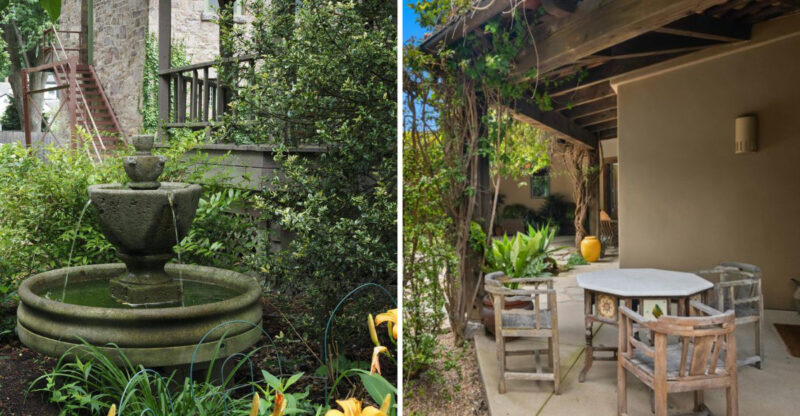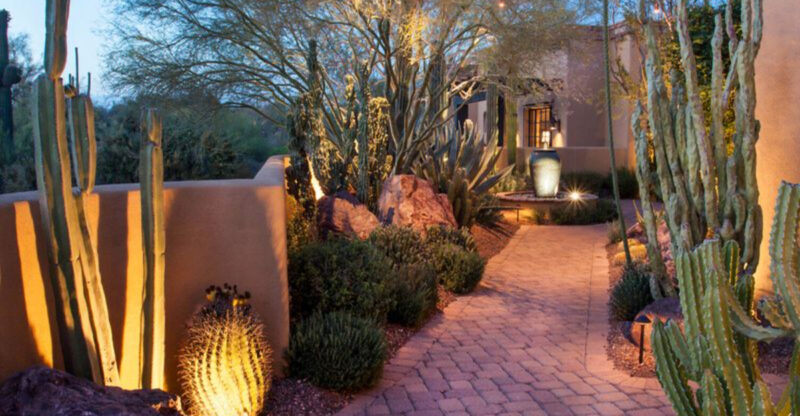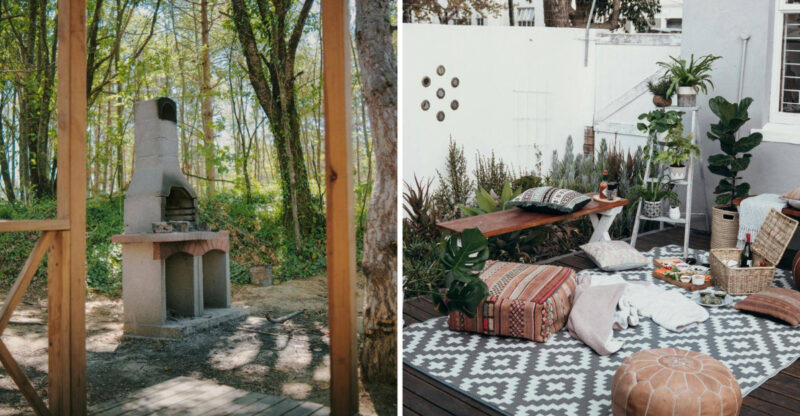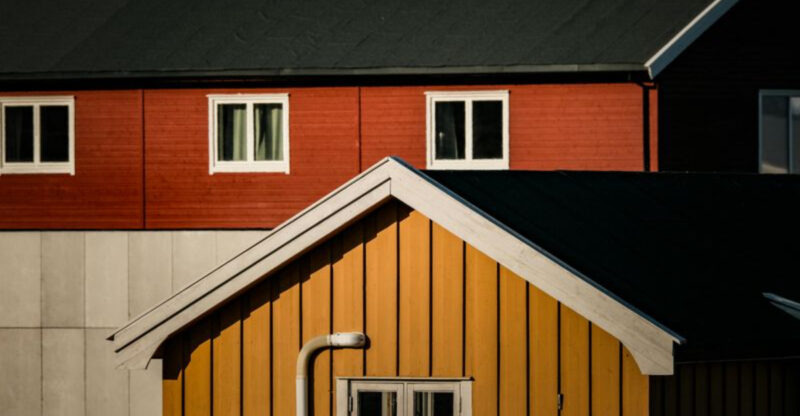11 Classic Architectural Styles That Define New York City’s Street Charm
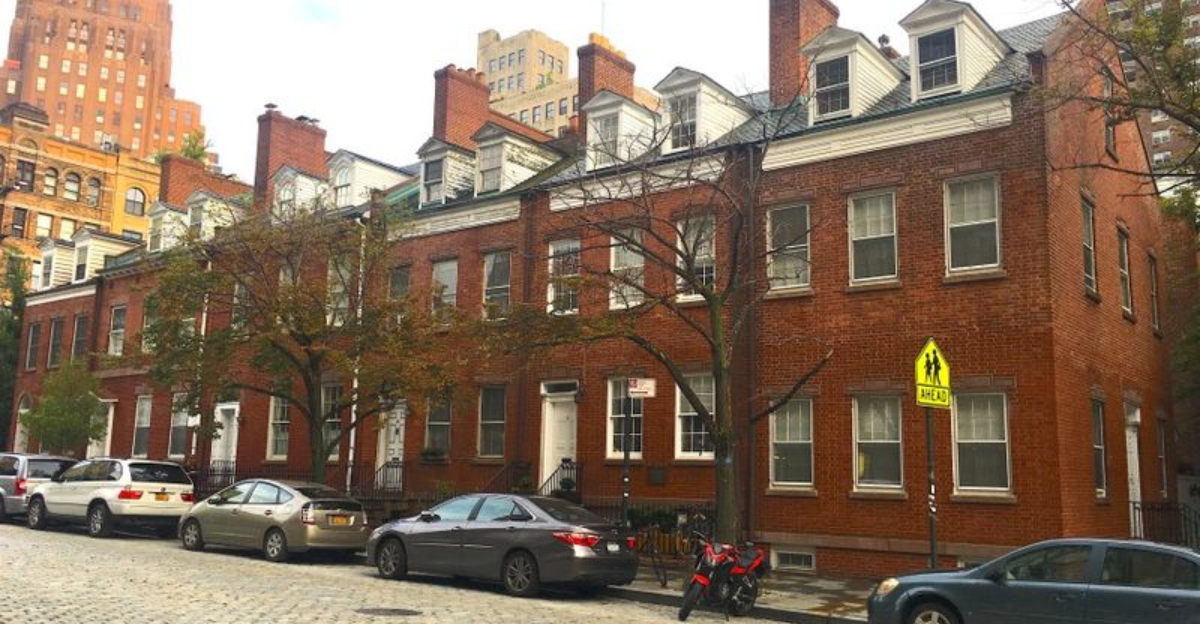
Walking through New York City is like flipping through a giant history book of architecture.
From the narrow streets of Lower Manhattan to the wide avenues of Midtown, the city showcases an incredible variety of building styles that tell the story of its growth.
Each neighborhood reveals different architectural treasures that have shaped the city’s unique character over centuries.
1. Brownstone Rowhouses
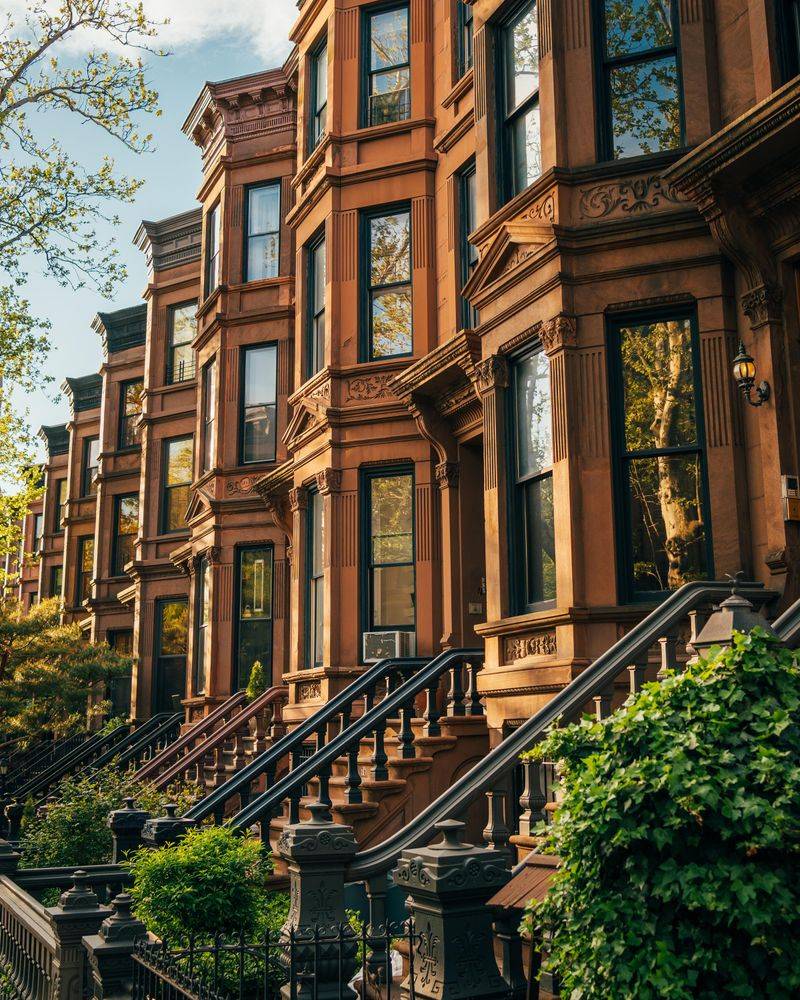
Nothing says “classic New York” quite like a street lined with brownstones. These iconic rowhouses, covered in chocolate-brown sandstone, became popular in the 1800s when wealthy families wanted fashionable city homes.
The wide stoops (front staircases) leading to elevated first floors were designed to rise above the street noise and dirt of horse-drawn carriages. Inside, you’ll find high ceilings, ornate moldings, and original woodwork that craftsmen spent months perfecting.
Brooklyn’s Park Slope and Manhattan’s Upper West Side offer some of the best-preserved examples, where these homes now sell for millions despite being built as middle-class housing. Many brownstones feature distinctive iron railings and bay windows that make each one slightly unique.
2. Beaux-Arts Buildings
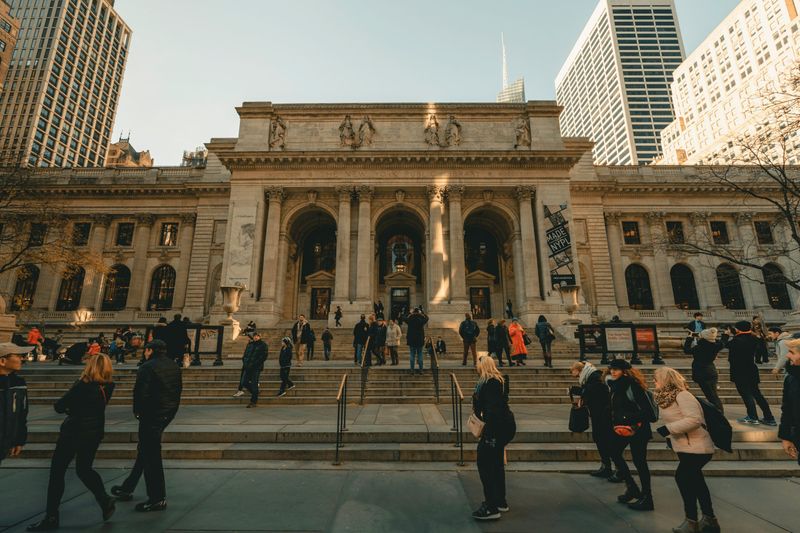
Grand Central Terminal stands as the perfect example of Beaux-Arts grandeur in New York City. This architectural style swept America in the late 1800s after architects studied at Paris’s École des Beaux-Arts, bringing elaborate classical designs back home.
The style features dramatic arches, columns, and sculptural details that make buildings look like European palaces. You’ll spot symmetrical facades, roof balustrades, and decorative garlands carved into stone.
The Metropolitan Museum of Art and New York Public Library showcase this style beautifully, with their imposing entrances and magnificent interiors. When I walk past these buildings, I’m always struck by how they manage to be both formal and theatrical at the same time, commanding attention on even the busiest streets.
3. Art Deco High-Rises
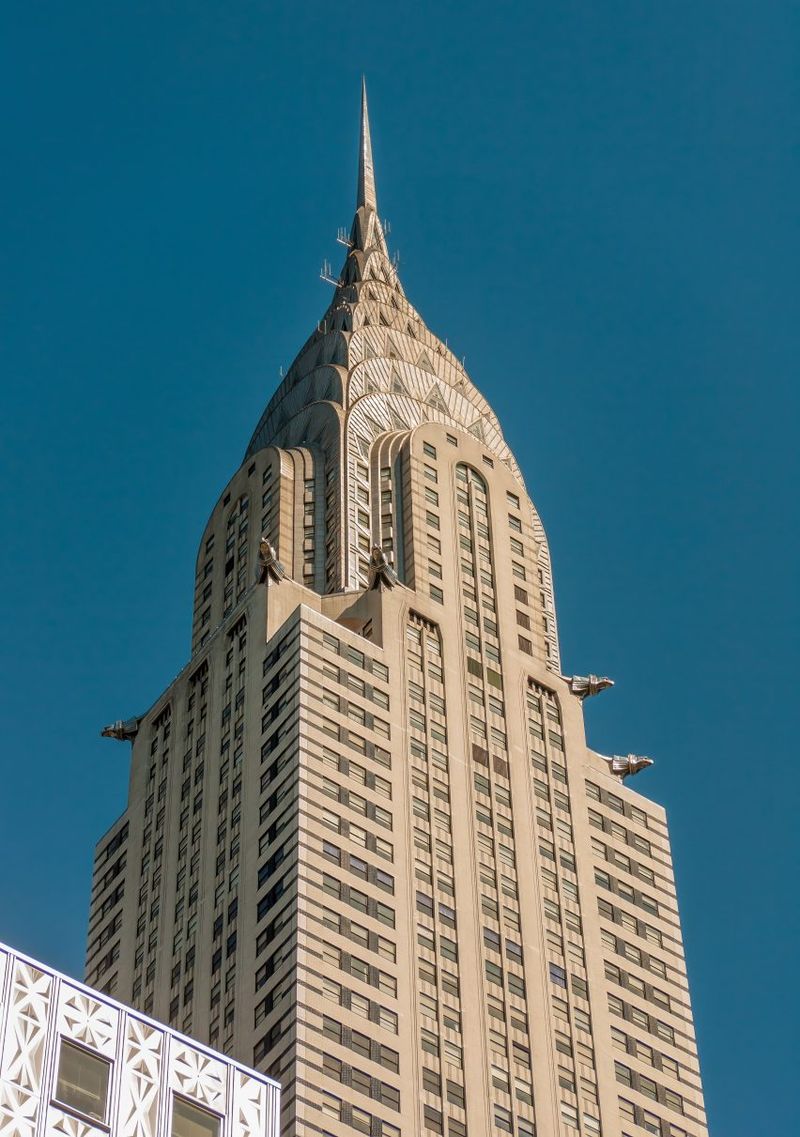
Have you ever stared up at the Chrysler Building’s gleaming crown? That’s Art Deco at its finest! This style took over New York in the 1920s and 30s, bringing bold geometric patterns and decorative elements to the skyline.
Art Deco buildings like the Empire State Building combine sleek modern lines with decorative flourishes think zigzags, sunbursts, and stylized floral patterns. The style represented luxury and progress during a time when skyscrapers were racing upward.
Midtown Manhattan holds the greatest concentration of these treasures, where setback designs (where buildings narrow as they rise) created the “wedding cake” profile that defines the classic New York silhouette. Materials like chrome, aluminum, and colorful tiles give these buildings their distinctive character that still feels fresh nearly a century later.
4. Neo-Gothic Churches
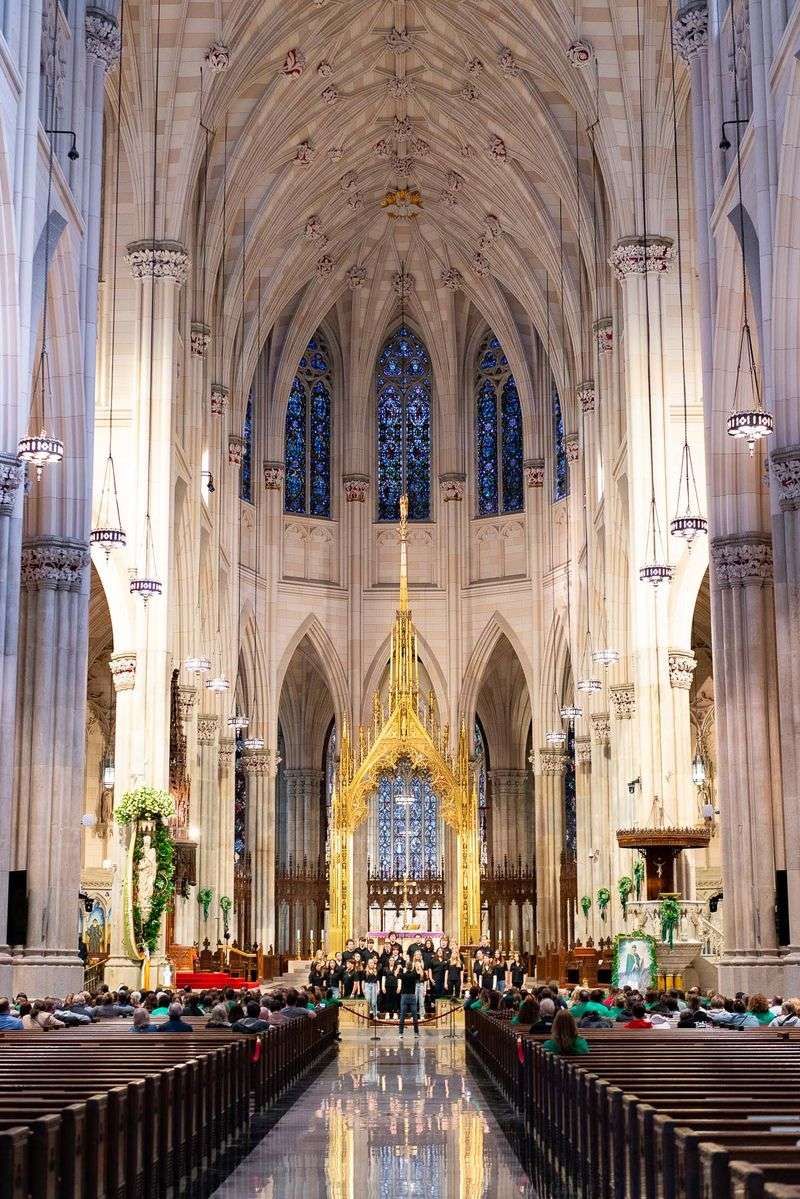
St. Patrick’s Cathedral rises like a medieval vision amid Midtown’s modern towers. Neo-Gothic architecture brought the pointed arches and soaring spires of European cathedrals to New York in the 19th century, creating spiritual landmarks that still inspire awe today.
These churches feature intricate stone carvings, massive rose windows with stained glass, and ribbed vaults that draw your eyes heavenward. The style was considered perfect for houses of worship because its vertical emphasis seemed to reach toward the divine.
Though St. Patrick’s might be the most famous, Trinity Church in Lower Manhattan offers another stunning example with its brownstone exterior and peaceful courtyard. When I step inside these sacred spaces, the sudden quiet and filtered light through colored glass creates an instant escape from the city’s constant motion.
5. Greek Revival Townhomes
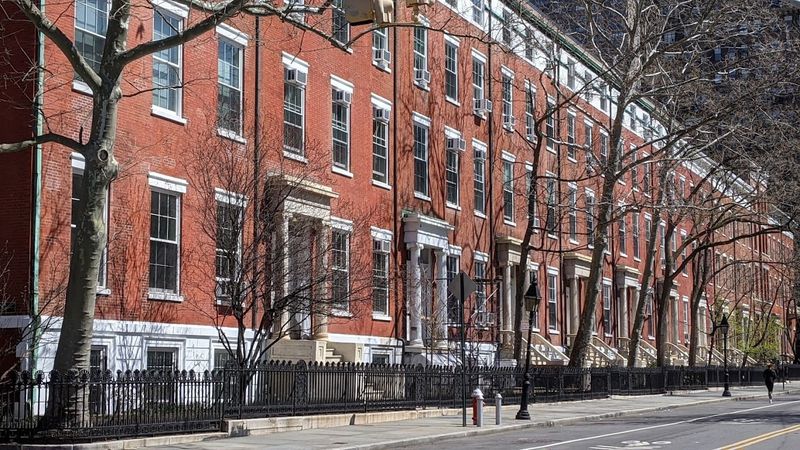
If you wander through Greenwich Village, you’ll spot elegant homes with columns and triangular pediments that look like mini Greek temples. Greek Revival architecture swept through New York in the early 1800s as Americans embraced democracy and identified with ancient Athens.
These dignified townhouses feature smooth stone facades, symmetrical designs, and decorative door surrounds with sidelights and transoms. White was the preferred color, though many New York examples used local materials in darker hues.
The style represented America’s young democracy and classical ideals. Washington Square North contains a beautiful row of these homes, now part of NYU’s campus. Though less flashy than later Victorian styles, Greek Revival buildings have a timeless simplicity that has aged remarkably well, their clean lines providing a visual break from more ornate neighbors.
6. Cast-Iron SoHo Facades
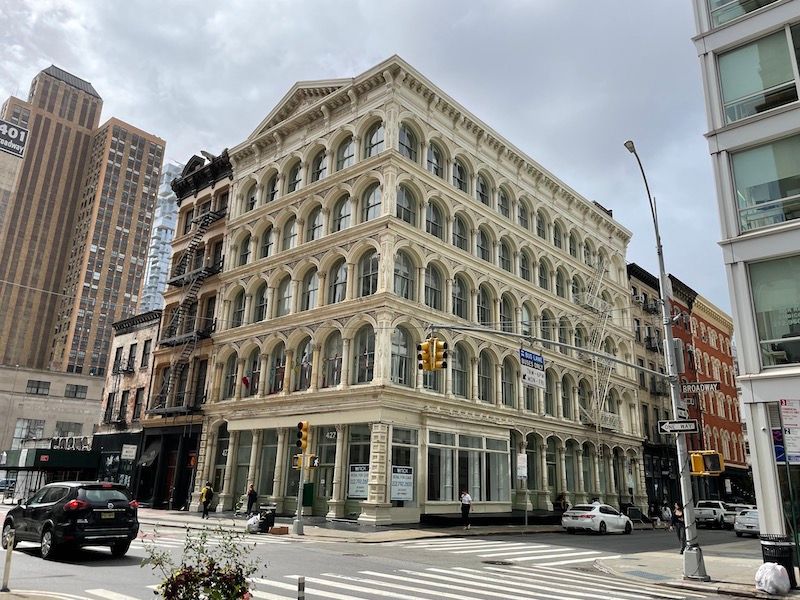
SoHo’s distinctive buildings with their repeating arched windows and intricate facades weren’t actually carved from stone. They’re made from cast iron a revolutionary building material in the 1800s that allowed for quick assembly and decorative details at lower costs.
These former factories and warehouses feature columns, cornices, and window frames mass-produced in foundries, then bolted together on-site like giant erector sets. Painted white or cream to mimic expensive stone, they fooled the eye while providing large, open floor plans perfect for manufacturing.
Today, the district between Houston and Canal Streets contains the world’s largest collection of cast-iron architecture. When sunlight hits these buildings at certain angles, their ornate details pop dramatically against the shadows. This industrial heritage narrowly escaped demolition in the 1960s before artists discovered the spacious lofts and preservationists recognized their historic value.
7. Tudor-Style Residences
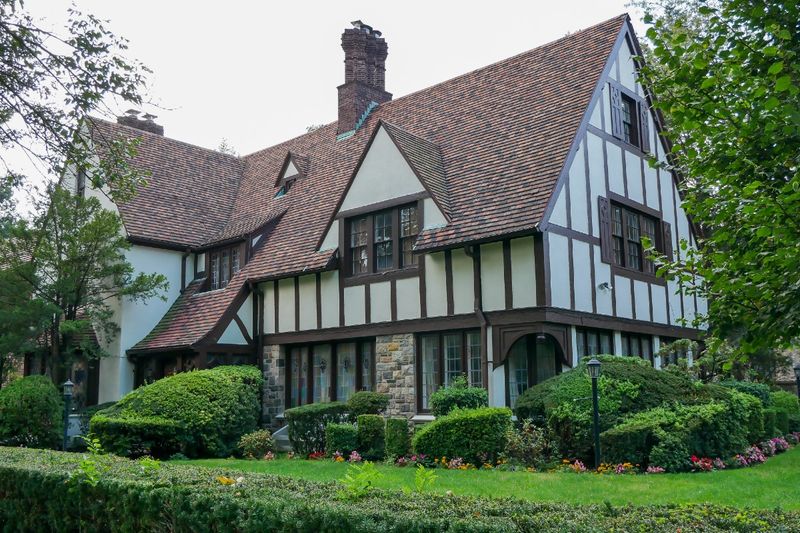
Hidden in quiet corners of Forest Hills Gardens and Riverdale are charming homes that look transported from medieval England. Tudor-style architecture became popular in New York’s early suburban developments of the 1920s, offering a romantic alternative to city apartment living.
These storybook houses feature distinctive half-timbering dark wooden beams against white stucco walls along with steep roofs, leaded glass windows, and prominent chimneys. Many include whimsical touches like rounded doorways or decorative brickwork in herringbone patterns.
Though less common than other New York styles, Tudor homes create entire fairytale neighborhoods in certain outer-borough enclaves. The style represented old-world craftsmanship and stability during rapid urban change. When walking through these areas, it’s easy to forget you’re still in New York City, as the architecture creates a village-like atmosphere miles from Manhattan’s grid.
8. Federal-Style Buildings
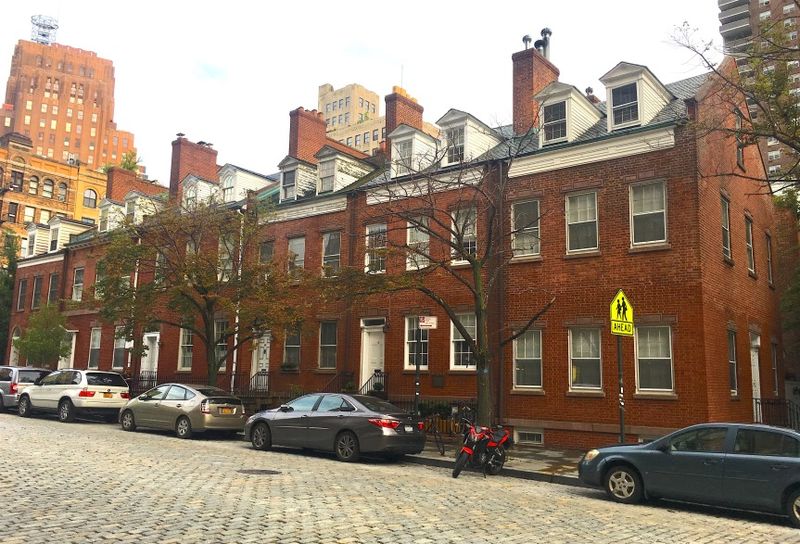
Down in Manhattan’s oldest neighborhoods, you’ll find modest yet elegant buildings with flat facades and simple details that date to the early days of the American republic. Federal-style architecture dominated New York from 1790 to 1830, reflecting the new nation’s identity.
These buildings feature symmetrical designs, low stoops, and refined details like semi-circular fanlights over doors and delicate ironwork. Unlike later styles, Federal buildings avoided flashy ornamentation, instead emphasizing proportion and balance.
The Merchant’s House Museum on East 4th Street offers a perfectly preserved example, while streets like Harrison in Tribeca still contain rows of these understated beauties. Though dwarfed by later skyscrapers, these survivors connect us directly to the city’s early days when New York was just beginning its rise to prominence. Their simple red brick facades and small-paned windows speak to an era of handcrafted construction.
9. Romanesque Revival Structures

Massive stone buildings with rounded arches and fortress-like appearances mark the Romanesque Revival style that became popular after the Civil War. This muscular architectural approach used rough-hewn stone, short columns, and deep-set windows to create buildings that exuded permanence and strength.
Architect Henry Hobson Richardson popularized the style, leading to its nickname “Richardsonian Romanesque.” These buildings often feature asymmetrical designs, contrasting stone colors, and intricate carvings around windows and doorways.
The Jefferson Market Library in Greenwich Village exemplifies this style with its clock tower and castle-like details. When exploring New York, I’m always drawn to these buildings’ textural qualities – how light plays across their uneven stone surfaces and deep window recesses. They stand as monuments to an era when American cities were establishing their own architectural identity separate from European influences.
10. Prewar Apartment Buildings
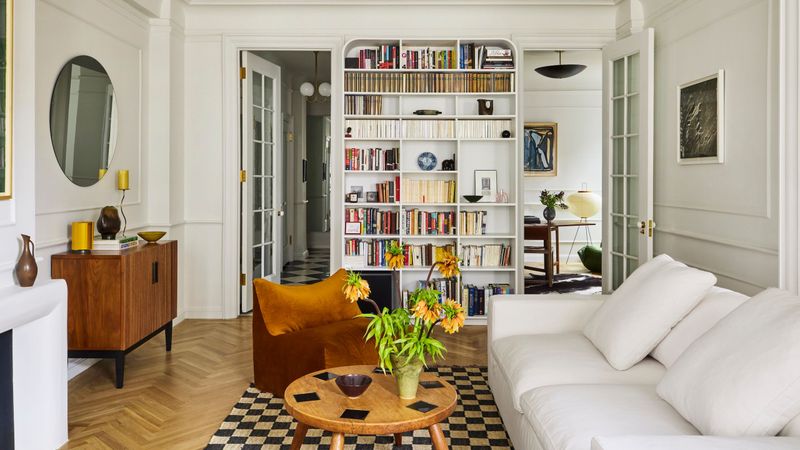
“Prewar” might sound like a generic term, but to New Yorkers, it represents a specific and highly desirable type of apartment building constructed between 1900 and 1940. These elegant residential buildings line Central Park and the grand avenues of the Upper East and West Sides.
Distinguished by their solid construction, prewar buildings feature gracious lobbies with marble floors, high ceilings, thick walls, and generous room proportions. Many showcase Renaissance or Gothic details on their limestone or brick facades, with ornate cornices crowning their tops.
The Dakota and San Remo stand as famous examples, with their distinctive silhouettes visible from Central Park. Inside, apartments often contain charming period details like herringbone wood floors, crown moldings, and separate service entrances. Their enduring popularity comes from qualities rarely found in newer construction – craftsmanship, materials, and proportions that create a sense of permanence and elegance.
11. Modernist Glass Towers
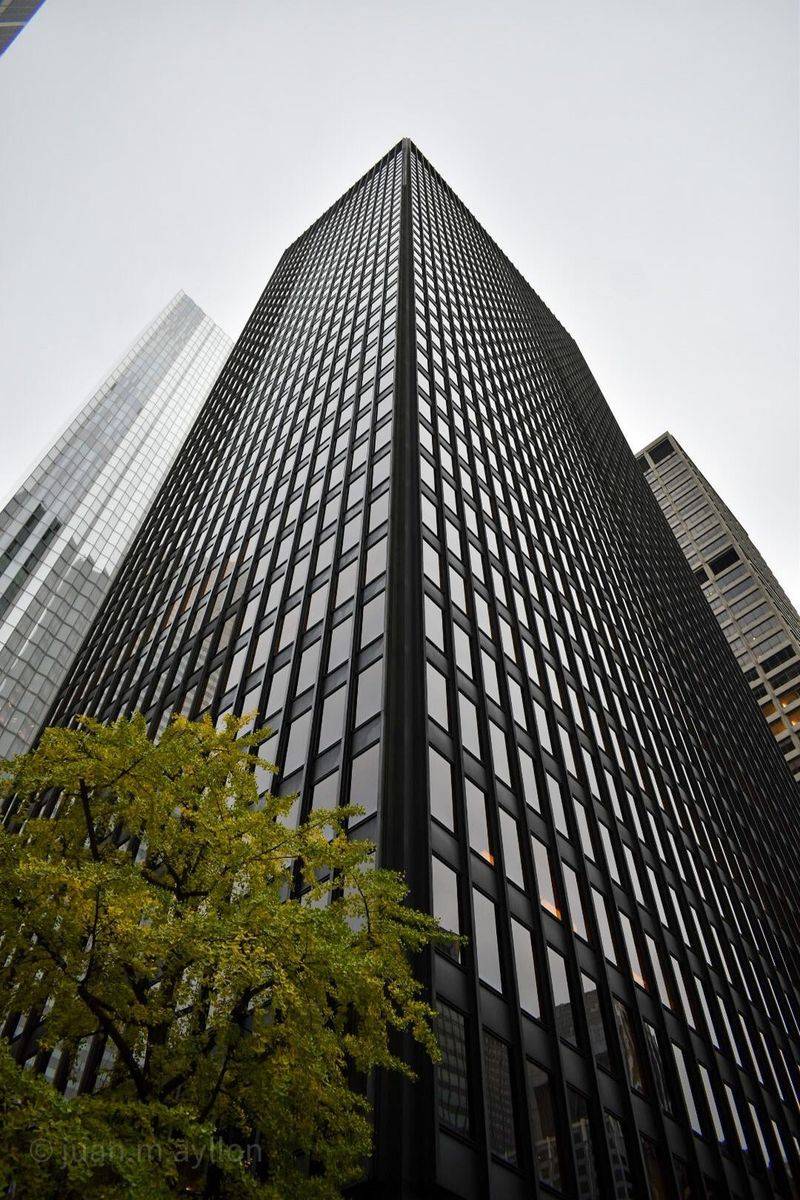
The Seagram Building on Park Avenue revolutionized New York architecture when completed in 1958. This sleek bronze-and-glass tower by Mies van der Rohe rejected historical ornamentation in favor of expressing structure honestly the famous “less is more” approach.
Modernist buildings feature clean lines, minimal decoration, and extensive use of glass to create transparent walls. They often stand on columns or “pilotis” that create open plazas at street level, a dramatic departure from traditional buildings that filled their entire lots.
Though newer than other styles on this list, these mid-century masterpieces have become classics in their own right, influencing countless corporate headquarters across Manhattan. The Lever House and UN Secretariat Building offer other excellent examples of this revolutionary approach. While sometimes criticized as cold, the best modernist towers have a refined elegance and precision that contrasts beautifully with the city’s older architectural layers.

